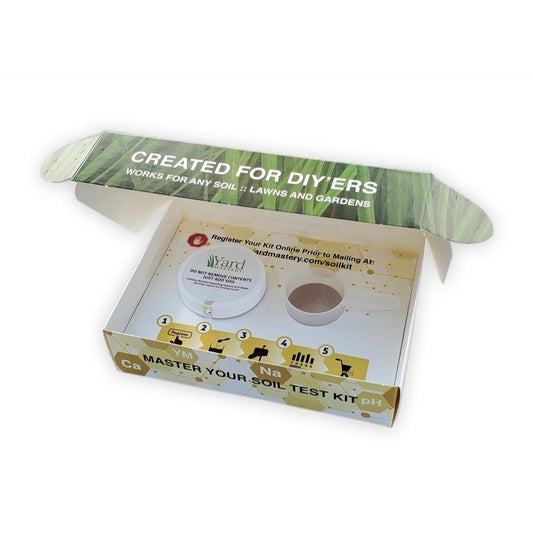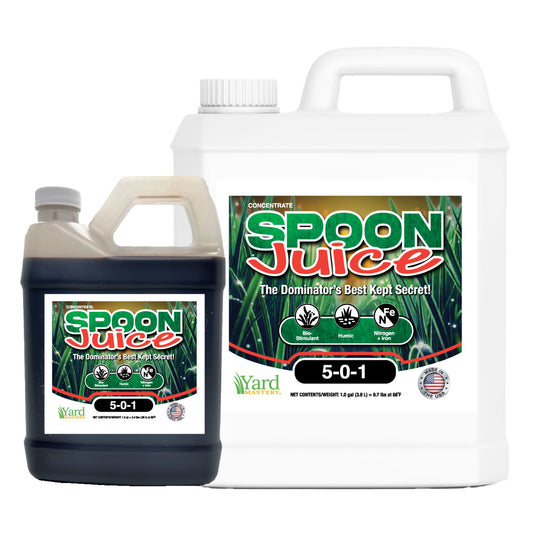Centipede Grass Fertilizer Recommendations - Based On A Soil Test
Today I am going to do some basic reading of a soil test taken on Centipede grass in Alabama and make recommendations. If you want to really get into the thick of things, don’t forget to first review the following 2 blog posts from earlier in the season where I talk about about fertilizers and how to use them once you have a soil test done. These give you all the “why” behind the recommendations I will be making below.
Everything You Need To Know About Lawn Fertilizer - Click Here
(tells you what the numbers on the bag are for)
How To Choose Fertilizer Based On A Soil Test - Click Here
(explains the difference in ‘general purpose’ and ‘specialty’ fertilizers)
If you are reading this and have Centipede grass, your soil test may come out differently - and that is ok. The key is for you to read what I recommend below and apply the thinking process to your own test. This isn’t a cookie cutter “do this for all centipede grass” type of article - instead it’s designed to teach you how to think through a strategy in light of your grass type.
For sure, centipede is different from other warm season grasses in that it likes lots of potassium, lower amounts of nitrogen, and plenty of micronutrients. Sea Kelp hormones (bio-stimulant) are great for it as well.
4 quick points of understanding:
- When you are working to correct deficiencies in your soil, you do not have to find one miracle application and dump it all down and fix the problem in a day. We are not farmers. Think of this as a directional strategy. You know what you need and you apply fertilizers to fill those needs over time. For example, if you are short on potassium, you can choose ferts to use over the next year that contain potassium. You may want to give your lawn a boost with 0-0-48 right out of the gates, but then over the next 6 months as you fertilize the lawn every month, use 8-1-8 XGN for an app, and then maybe 24-0-4 CX DIY for another as those both also contain potassium.
- When you test again, if your levels are not all perfect, that’s ok. Remember, your lawn consumed the nutrients in the soil so it’s not like you are going to get your levels into a good range and they will stay there - because your lawn continues to use them up - this is why we have to continually “nurse” the lawn.
- You will almost always need nitrogen in every application. Mark that down. It just doesn’t hang around in soil very long (it is volatile) and the grass uses a lot of it. You will need to apply less in spring and fall and more in summer but keep in mind, you will almost always apply N when you fertilizer unless you are using a specialty fertilizer.
- How does your lawn look? If you are low in many nutrients but your lawn looks good and is growing well, don’t panic! Work methodically with measured applications to correct, but don’t think your lawn is going to die tomorrow. Grass is grown down the center of busy interstates in terrible soil and looks just fine. Grass can adapt.
Here is a video I made talking about How To Interpret A Soil Test (worth a review)
Now let’s look at an example of a soil test, centipede lawn, and make some quick recommendations (if you know me, you know I’m super detailed and nothing is every quick lol).
Centipede Lawn, Enterprise, AL

Summary of Recommended Applications
Mag-i-Cal Plus for Acidic Soil - Apply anytime between now and winter and again next spring
ProPeat 13-5-8 - Apply now (August) and again in mid-to-late September
0-0-48 SOP - Apply now. If you have leftovers, apply again in September.
0-0-2 MicroGreene - Spray down 6oz/1000 every month until winter
7-0-0 Greene Effect - Spray down 6oz/1000 whenever you want a pop of darker color
- you will have some of the liquids leftover for next year for sure, that’s fine, they have a multiple year shelf life
The details and “why” are now listed below:
Soil Test Detailed Recommendations
This lawn soil is fairly low in everything so it gives us a clean slate to work with. The first thing to look at here though, is the pH. It’s close to the optimal range but still not there so we need to give it a bump. This is where a new product from Jonathan Greene can come into play and it’s sole purpose is to move a low pH (acidic soil) UPWARD.

Raising the pH
Mag-i-Cal Plus for Acidic Soil - this product is specifically designed to raise pH in all soils. The key is the calcium carbonate in the product, specifically the carbonate CO3. Carbonate will neutralize acids and effectively raise the pH. Additionally, this product contains some carbon sources (humic and biochar) to excite soil microbes which also work to balance the soil.
In the case of this soil test, it may only take a 1 or 2 applications to move into the optimal range but adding Mag-i-Cal Plus to your normal yearly application schedule is a good idea. Apply once in fall and once in spring. Re-test your soil every 2 years. (or yearly if you are a real nut case!)
Next, I’d choose a fertilizer with all 3 macronutrients to go ahead and work on the big swingers - N-P-K. Since this is centipede, we don’t want to push it too hard with N so we would look for a natural source.
All Around Good Fertilizer for Macros
Currently the best value fert we are carrying with these 3 is the ProPeat 13-5-8. ($39.99 for 40lb bag)
It has N but not so much as to put the Centipede in overdrive, but it also has 5% phos and 8% potassium. Apply at 3lbs/1000 right away and you will see some nice results. This is a peat based natural product that produces fast results but won’t hammer the lawn too hard. No chance of burning anything either. You could apply this twice here in Aug and September and be in good shape hedging into fall time.
You could continue to use this fert through the following months and into next year, or switch over to my favorite fertilizer, 8-1-8 XGN DIY which is also excellent for Centipede. 20lb bag covers 5,000 sq ft.
Specialty Fertilizer for Potassium
For some additional K (potassium) I would also recommend an application of 0-0-48 SOP. This is a specialty product designed for lawns in need of potassium and it’s in the very low salt index formulation sulfate of potash. Centipede loves this. I know this seems like a high price at $59.99 but we did some research and this is the only SOP formulated specifically for lawns at this price point. On Amazon SOP is going for $7 per pound whereas our formula is only $2.50 per pound (24 lb bag) and that is shipped right to your door. This product can be applied now and again 2-3 weeks later if you have some leftover. Otherwise one application would be fine.

Micronutrient Blend with a Twist
To correct a good majority of your micronutrients, I’d pick up the pack from Greene County that contains 0-0-2 MicroGreene and 7-0-0 Greene Effect. The reason why is that the MicroGreene is going to hit the majority of the micros you need. Magnesium, iron, copper, manganese and zinc. It also contains humic acid for carbon and sea kelp hormones for rooting. Apply this at 6oz/1000 sq ft every month.
I have the 7-0-0 Greene Effect in there because it is a way to keep centipede green without pushing too much growth all year. Greene Effect has foliar absorption abilities which means a little goes a VERY long way in bringing results since the nutrients don’t have to get into the soil and travel up through the roots to work - they are basically “injected” right into the leaf tissue for immediate results - sometimes within hours. As you know, centipede grass does not do well when pushed too hard with N so getting it through the leaf tissue in low doses is perfect for it. The Greene Effect also has iron which is going ot get your apple green centipede a little darker than your neighbors.
Boron (B)
People always want to know where to get Boron. If you go to the store and get 20-Mule-Team Borax (detergent aisle) and put one tablespoon of that in 1 gallon of water in a pump sprayer, this mix can cover 1,000 sq ft. This is enough boron for an entire year. Give the leftover Borax to the person who does laundry in your house or use it to kill ants.
Moving into 2021
For this lawn, there is no need to retest for at least 18 months but you could even push that to 24 months, no problem there. Remember, the way your lawn looks is very important and I can tell you that after applying the products I recommend below, your lawn is going to be looking much better.
The following spring, as soil temps start to climb to around 55F you will want to hit the lawn again with the Mag-i-Cal for Acid Soils. Once they move up to around 65F and you are mowing, come out of the gates nice and easy with some 8-1-8 XGN.
I also recommend using added bio-stimulants such as Humic12 and RGS.
There is a lot more we could go into here - including pre-emergent herbicides, fungicides, and insect control. For that, you can get my free app that tells you all year, what to put down, when to put it down, and why. It also gives you the soil temperatures for your area so you know exactly when it’s time to apply.
Get it here.
- Choosing a selection results in a full page refresh.





